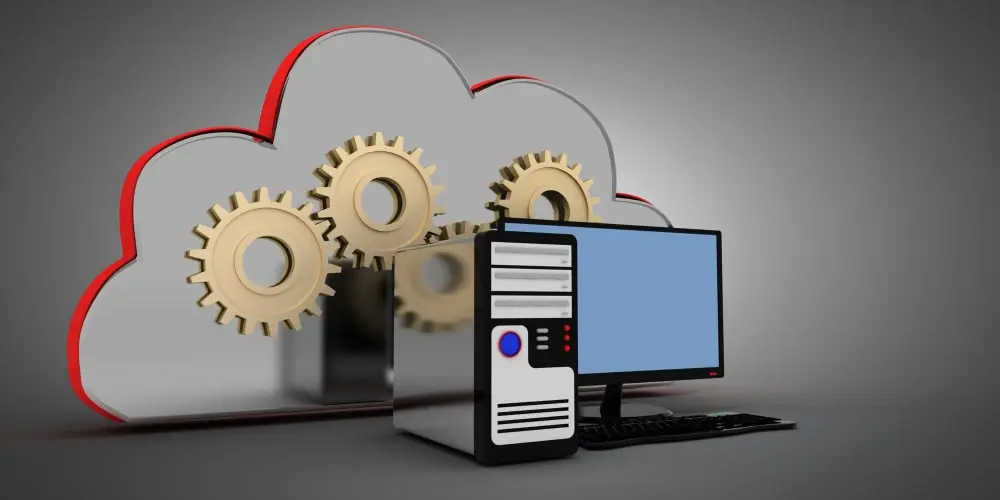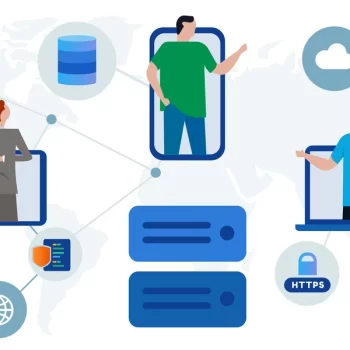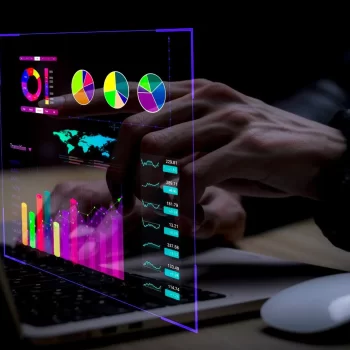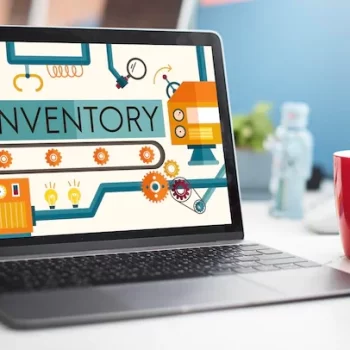In today’s dynamic IT landscape, operations have become increasingly complex, with businesses managing diverse systems, devices, and services. Efficient control over these resources is critical, and that’s where the difference between asset and configuration management becomes essential. While IT asset management tracks physical and digital assets across their lifecycle, configuration management focuses on the relationships and settings of those assets within the IT environment. Understanding asset management vs configuration management helps organizations avoid downtime, enhance service delivery, and maintain compliance.
With its powerful product suite, Infraon simplifies this challenge for SMES. Designed to manage heterogeneous IT, improve asset control, secure remote access, and boost service efficiency, Infraon empowers businesses to master both asset and configuration management. By addressing the core difference between asset and configuration management, Infraon ensures that IT operations stay streamlined, transparent, and agile, no matter how complex the infrastructure.
Related Blog: Simplifying Mobile Asset Tracking and Management: A Complete Guide
What is Asset Management in IT?
Asset management in IT is all about keeping track of everything your business uses—from laptops and servers to software and licenses. It’s a structured way to ensure you know what you own, where it is, how it’s being used, and when it needs to be updated or replaced. This process is known as asset lifecycle management, and it helps organizations avoid surprises like unused licenses, outdated hardware, or compliance issues.
The main components of IT asset management include hardware (like desktops, routers, or printers), software (installed applications), and licenses (usage rights and renewals). For example, suppose your company gives employees laptops and installs licensed software. In that case, asset management ensures that every device and license is tracked from the time it’s purchased to when it’s finally retired or replaced.
This becomes especially important when budgeting and planning upgrades. Knowing the exact status of your assets helps avoid overspending and ensures nothing is forgotten. It also supports regulatory compliance, helping you stay audit-ready at all times.
Asset management also connects with configuration management in ITIL, which focuses more on the setup, relationships, and performance of assets within your IT infrastructure. Together, they form a powerful system to run IT smoothly.
Companies like Infraon help businesses implement IT operations best practices by offering tools that make asset control easier. Their solutions are designed to improve asset lifecycle management, secure remote access, and ensure you’re always in control of your IT environment.
What is Configuration Management?

Configuration management is the process of identifying, organizing, and maintaining information about your IT systems and how they interact. Unlike asset management, which focuses on “what” you have, configuration management is about “how” things work together. It tracks configuration items (CIs)—like servers, networks, and applications—and maps out their relationships to ensure smooth IT operations.
This is a key part of ITIL asset and configuration management, helping IT teams deliver services efficiently and reliably. It provides clear visibility into the IT environment, making it easier to manage changes, troubleshoot issues, and prevent disruptions.
One of the most essential tools in this process is the Configuration Management Database (CMDB). It holds all the details about each CI, such as its configuration, status, and how it connects to other items.
Key Points:
- Configuration Items (CIS): These include hardware, software, networks, and documents that are tracked and managed.
- Configuration Management Database (CMDB): A centralized system that stores data about CIS and their relationships.
- Role in ITIL: Supports service management by giving teams the information needed to maintain performance and handle changes effectively.
Example Use: Mapping how an application depends on specific servers, databases, and network paths.
By following IT operations best practices, configuration management ensures your IT environment is structured, traceable, and easier to control, especially in complex infrastructures.
Key Differences Between Asset and Configuration Management
Understanding the difference between asset and configuration management helps IT teams manage resources better and improve service delivery. Here’s a simple comparison of asset management vs configuration management to show how each works and how they support each other.
| Focus Area | Asset Management | Configuration Management |
| Purpose | Tracks ownership, value, and lifecycle of IT assets | Tracks setup, structure, and relationships of systems and components |
| Scope | Covers hardware, software, and licenses across their lifecycle | Covers configuration items (CIs) and how they interact within the IT environment |
| Data Management | Focuses on purchase date, cost, warranty, usage, and disposal info | Focuses on version, status, dependencies, and change history of CIs |
| Tools Used | IT Asset Management (ITAM) tools | Configuration Management Database (CMDB) and ITIL-based configuration tools |
| Outcomes | Helps with budgeting, compliance, and asset lifecycle management | Supports faster issue resolution, change control, and better service delivery |
| How They Work Together | Asset info helps identify and manage CIs; configuration links assets to services | Configuration relies on accurate asset data to build relationship maps and service views |
This simple comparison of asset management and configuration management shows that while they serve different purposes, both are essential for smooth IT operations.
Why the Difference Matters in IT Operations
Knowing the difference between asset and configuration management is key to running efficient and reliable IT operations. When teams confuse the two, it can lead to messy records, poor service delivery, and costly downtime.
- Avoiding Data Silos and Duplications: Without clear roles, teams may store asset data in multiple places, causing confusion and duplication. This slows down decision-making and creates gaps in IT visibility.
- Better Incident and Change Management: Asset management shows what you have, while configuration management shows how it all works together. This clarity helps IT teams act faster and avoid mistakes during incidents or system changes.
- Improved Compliance and Audit Readiness: Accurate asset records with mapped configurations ensure your business stays compliant and ready for audits, avoiding fines or legal trouble.
Case Study: In 2017, a major UK healthcare provider suffered extended system outages because teams had incomplete configuration data and confused it with asset lists. The downtime affected critical patient services.
Understanding the roles of both systems is part of IT operations best practices, helping businesses stay in control and reduce risks.
How Asset and Configuration Management Work Together
Though different, asset and configuration management work best when connected. Integrating asset inventory with the Configuration Management Database (CMDB) allows IT teams to see what they own and how it works together. This unified data helps teams make smarter decisions during upgrades, fixes, or audits. The difference between asset and configuration management becomes a strength when combined—assets show ownership, configurations show relationships. This boosts efficiency for service desks, helps operations teams manage change better, and gives security teams full visibility. So, the key in asset management vs configuration management is not choosing one, but connecting both.
Best Practices for Implementing Both in Your Organization
To make asset and configuration management work well, having a clear plan and the right approach is important. Here are some simple tips to get started and stay on track:
- Start with Clear Definitions and Objectives: Make sure everyone understands what asset and configuration management mean, and why both are needed. Define clear goals so teams know what success looks like.
- Choose the Right Tools: Use reliable tools like ServiceNow, Freshservice, or Infraon to manage data, automate updates, and keep things organized. The right platform makes everything easier to handle.
- Maintain Accurate and Updated Records: Keep asset and configuration records current. Outdated data can cause mistakes during issue resolution or audits.
- Regular Audits and Stakeholder Involvement: Schedule routine checks to spot gaps and involve key teams—IT, finance, operations—to ensure everything aligns and stays transparent.
Related blog: What is Physical Asset Management Software?
Conclusion
Understanding the difference between asset and configuration management is key to running smooth and efficient IT operations. While asset management tracks what you own, configuration management shows how everything connects and works together. Managing both properly helps improve service delivery, reduce downtime, and stay audit-ready. Together, they offer real strategic value to your business.
If you’re looking to streamline your ITSM processes, the Infraon product suite is a smart choice. It helps you manage assets, configurations, and services in one place. Visit Infraon.io to explore how their solutions can support your IT goals.
FAQ
Q1. What is the main difference between asset management and configuration management?
Asset management tracks what you own—like hardware, software, and licenses—throughout their lifecycle. Configuration management, on the other hand, focuses on how those items interact within your IT environment, helping map relationships and dependencies between systems for better service management.
Q2. Do I need both asset and configuration management in my IT operations?
Yes, both are essential. Asset management ensures control over your resources, while configuration management helps maintain service stability and handle changes. Together, they support compliance, reduce downtime, and improve decision-making across IT operations.
Q3. What tools can help with IT asset and configuration management?
Popular tools include ServiceNow, Freshservice, and Infraon. These platforms offer integrated solutions for managing assets, tracking configurations, automating updates, and building a complete view of your IT environment—all essential for streamlined and efficient IT service management.
Q4. How does a CMDB differ from an asset inventory system?
An asset inventory tracks ownership, cost, and lifecycle of IT items. A Configuration Management Database (CMDB) goes deeper—it stores data about how items relate and interact, supporting change management, incident resolution, and service mapping within your IT infrastructure.



















